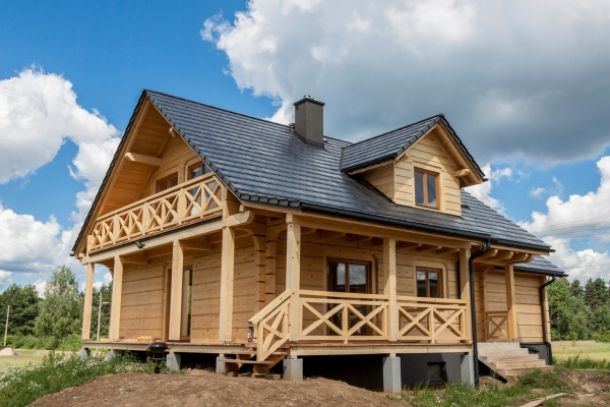DIY Wooden Home Mastery: Step-by-Step to Success
DIY Wooden Home Mastery: Step-by-Step to Success
Achieving mastery in DIY wooden home construction is a journey of continuous learning, meticulous planning, and practical execution. “DIY Wooden Home Mastery: Step-by-Step to Success” provides a detailed, structured approach to building a wooden home that is not only structurally sound but also reflects your personal style. This guide breaks down each phase of the project, offering expert insights, practical tips, and motivational advice to help you advance from a beginner to a master builder.
Introduction
Building your own wooden home can be both challenging and immensely rewarding. Mastery in DIY construction means understanding every detail—from conceptualization and design to construction techniques and maintenance. This article is designed for DIY enthusiasts eager to refine their skills and achieve professional-quality results in their home-building projects. By following a step-by-step approach, you’ll gain the confidence and expertise needed to tackle even the most complex challenges.
Step 1: Laying the Groundwork
Define Your Objectives:
Start by clarifying your goals. Determine the style, size, and functionality of your wooden home. Create a comprehensive list of must-haves and nice-to-haves, ensuring that your vision is both ambitious and realistic.
In-Depth Planning:
Develop detailed blueprints using CAD software or by working with a professional. Your plans should include every aspect of the home—from the overall layout and room dimensions to the placement of windows, doors, and utility lines. Detailed planning minimizes errors and provides a clear roadmap for the construction process.
Budgeting and Timeline:
Establish a realistic budget that encompasses all costs, including materials, permits, tools, and a contingency for unexpected expenses. Create a timeline with clear milestones for each phase of construction. Effective budgeting and scheduling are crucial for maintaining momentum and keeping your project on track.
Step 2: Mastering Material Selection
Quality Wood and Sustainable Choices:
The foundation of any wooden home is the quality of its timber. Choose durable species like cedar, pine, or oak, ensuring that the wood is well-seasoned and treated. Incorporate sustainable options such as reclaimed wood or certified sustainable timber to reduce your environmental footprint.
Supplementary Materials:
In addition to quality wood, invest in high-performance insulation, robust fasteners, and weather-resistant sealants. These materials enhance the durability and energy efficiency of your home, ensuring that every component contributes to a lasting structure.
Step 3: Advanced Construction Techniques
Precision in Framing:
The framing stage is where your home begins to take shape. Use treated lumber and modern tools such as laser levels and digital calipers to achieve accurate cuts and alignments. Mastering traditional joinery techniques—like mortise and tenon, dovetail, or scarf joints—provides strong, aesthetic connections between timber elements.
Integrating Modern Tools:
Modern power tools and automation can significantly improve efficiency and precision. Embrace tools such as cordless saws, digital measuring devices, and even prefabricated modules when appropriate. These technologies reduce manual errors and accelerate the construction process, paving the way for mastery.
Detailed Assembly:
Focus on the step-by-step assembly of your home—begin with a sturdy foundation, then move to framing, insulation, roofing, and finally, the installation of windows, doors, and utilities. Each stage requires careful quality control and documentation. Learning from each step will refine your techniques and build your confidence.
Step 4: Finishing and Customization
Exterior Finishing:
Apply high-quality finishes to protect and enhance the natural beauty of the wood. Eco-friendly sealants, stains, or paints not only guard against environmental factors but also showcase the timber’s unique grain and texture. A well-finished exterior adds both aesthetic value and longevity to your home.
Interior Design Mastery:
Your interior spaces should be a blend of functionality and personal style. Consider open floor plans that maximize natural light, and incorporate custom-built furniture, handcrafted details, and modern lighting solutions. Personalizing the interior turns a functional space into a warm, inviting home that truly reflects your vision.
Step 5: Long-Term Maintenance and Continuous Improvement
Routine Maintenance:
A master builder knows that construction is only the beginning. Regular inspections and maintenance—such as resealing surfaces, cleaning gutters, and checking for structural integrity—are essential to preserve your home’s quality over time.
Learning and Adapting:
Embrace every project as an opportunity to learn. Document your process, record challenges and successes, and engage with DIY communities to share insights. Continuous learning and adaptation are key to achieving mastery in wooden home construction.
Feedback and Evolution:
Seek feedback from fellow builders, mentors, or online forums. Constructive criticism and shared experiences can lead to improvements in your techniques and inspire innovative solutions for future projects.
Conclusion
“DIY Wooden Home Mastery: Step-by-Step to Success” encapsulates the journey from an initial idea to a fully constructed, personalized wooden home. By methodically planning each phase, selecting quality materials, mastering advanced construction techniques, and embracing continuous improvement, you can elevate your DIY projects to a professional level. Mastery is achieved through persistence, learning, and a passion for craftsmanship. Embrace the process, celebrate every milestone, and let your self-built wooden home stand as a testament to your skill, creativity, and dedication.


